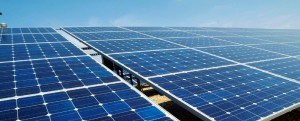Kelly and I had been wondering how much money we are saving with our solar PV system, so tonight I worked a little spreadsheet magic. Bottom line? Our electric bills so far have been half what they were the year before. Here’s how it all looks:
Date Amount Prior Year Difference Percent Savings 02/28/2014 $36.79 $72.91 $36.12 49.54% 01/31/2014 $40.78 $79.75 $38.97 48.87% 01/03/2014 $38.86 $67.66 $28.80 42.57% 12/04/2013 $33.89 $65.84 $31.95 48.53% 10/31/2013 $27.70 $60.49 $32.79 54.21% 09/27/2013 $56.45 $112.77 $56.32 49.94% 08/30/2013 $83.30 $140.69 $57.39 40.79% 08/02/2013 $34.71 $143.40 $108.69 75.79% 07/03/2013 $69.41 $78.15 $8.74 11.18% 05/31/2013 $68.00 $70.30 $2.30 3.27%
There are a couple of things to keep in mind here. First off, this is a simple comparison of charges between this year and the last: it doesn’t adjust for variations in weather. A better comparison would be to adjust this by the actual kWh purchased but I didn’t want to get too complicated.
Secondly, a significant part of our savings can be attributed to our shifting to a Time-Of-Use Demand (TOU-D) rate schedule. A Time-Of-Use (TOU) plan charges you less for the electricity you use during off-peak hours. Since we’ve been on the plan we shift our heavy electric loads to the early morning or evenings, depending on what season it is. For instance, most of our clothes drying is done after 9 PM weeknights or on the weekends, when our electricity cost is cheapest. My rough calculations shows that as much as two thirds of our electricity use occurs at off-peak rates, saving us money. The TOU-D plan has proven to be a good one, though we weren’t initially happy with Duke Energy’s requirement that we switch to it once we connected our PV system to the grid. And while it seemed complicated at first, in practice it’s been pretty easy to adjust to.
Thirdly, our savings would have been higher if not for two things. When we first cranked up our panels last May, we immediately began reaping the green benefits of generating our own power but not the economic benefits. Until we got our net metering electric meter installed, the extra juice our home was producing was making our old meter run faster than it normally did. In essence, we were being charged for the power we produced instead of credited. The new meter fixed that.
The other thing keeping our savings from being higher was almost a full 30 days in the summertime when our system was producing no power at all due to a fault in our inverter. Thus our savings in August and September would have been even higher.
I could sort through all the variables involved with our savings and someday I hope to do just that. A solar PV owner’s power bill is an order of magnitude more complex than the standard power bill, with confusing acronyms and multiple costs for what used to be a simple block of electricity use. I’ve tried before to translate this complexity into a spreadsheet so I can sort our what’s what but so far I haven’t completely solved the riddle.
I can say, though, that we’ve saved about $400 in reduced electricity bills since we went solar. That ain’t too shabby!
